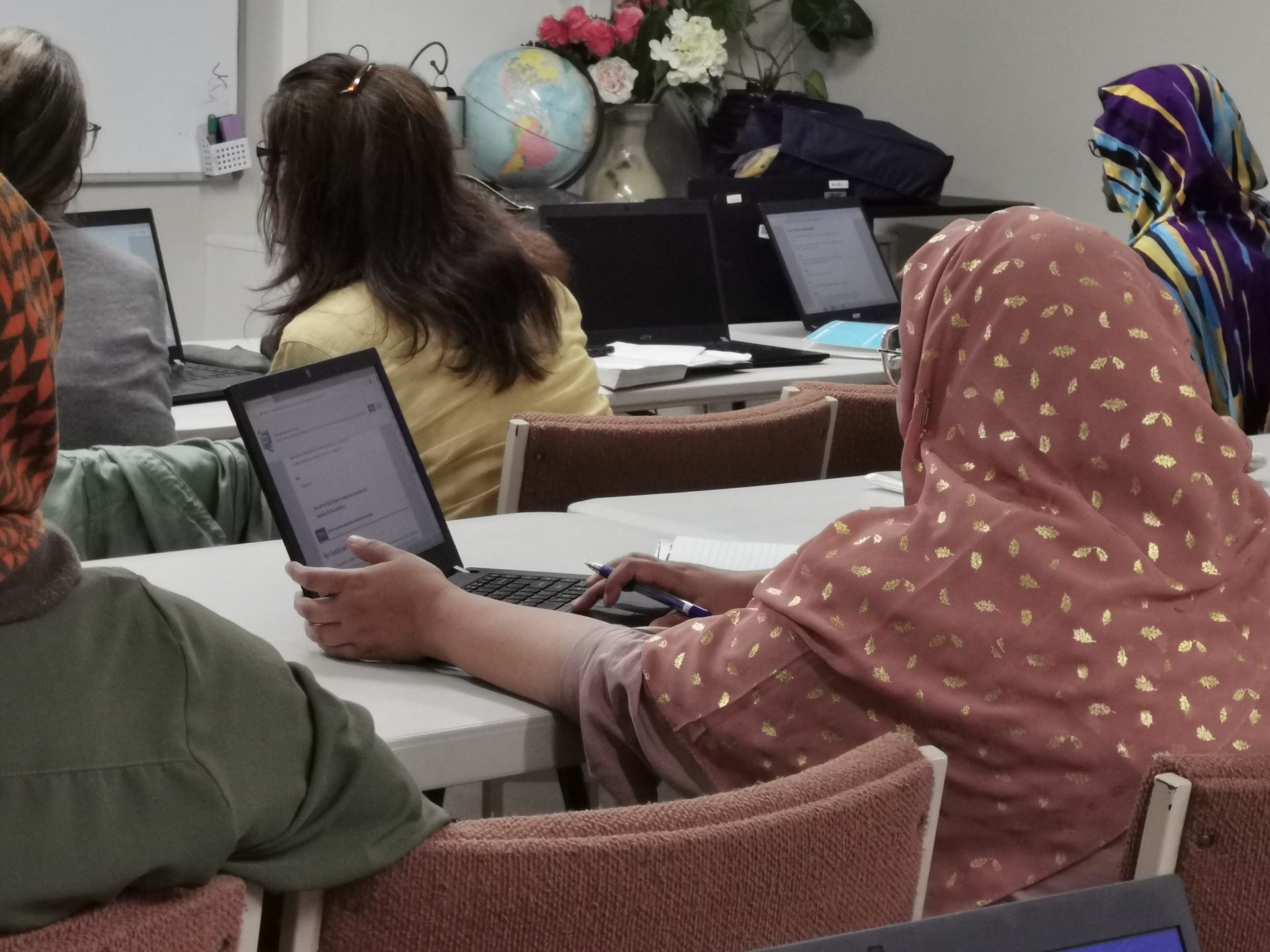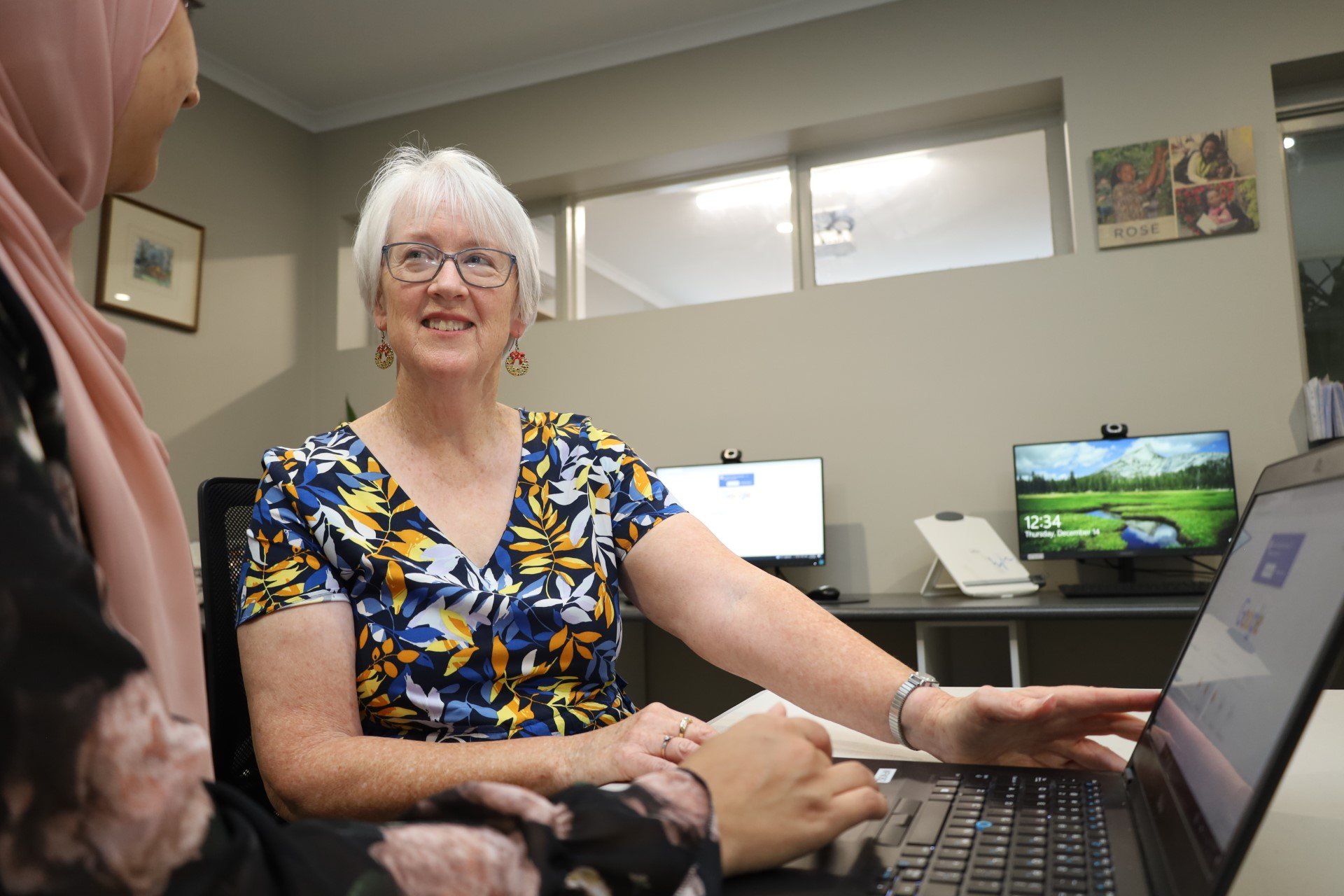Not-for-profit empowers migrant and refugee women with digital skills
Migrant and refugee women face unique challenges, one of them being a lack of digital capability.
Founded in 1994 by Sister Ann Halpin, Wellsprings for Women was established to address the isolation and loneliness experienced by women in the Dandenong region due to factors like low incomes, family violence, social isolation, lack of English skills, and mental illness.
The not-for-profit provides a range of programs, including digital literacy programs to migrant and refugee women from diverse cultural backgrounds, ages, levels of education and life experiences.
Digital skills for all
Gladys Torres, Education Manager at Wellsprings is passionate about making digital skills accessible for all women.
“Our digital literacy programs are delivered in a supportive and inclusive environment to foster learning, independence and confidence building, ranging from beginners to advanced levels,” Gladys says.
“Some programs are tailored to address specific needs, such as learning how to use tools like Canva or Microsoft PowerPoint. Whereas others concentrate on supporting learners in building their confidence when utilising equipment for communication, study and employment.
“The team have also developed an online resource bank for tutors and learners to use during class or to further develop their digital literacy skills in their own time,” says Gladys.
With over 278 people having completed one or more of their digital literacy programs in 2023, Gladys is proud of the team and all they have achieved.
“Feedback from our participants indicate they are very satisfied with the content of the programs, the methodologies used, the teaching staff and the equipment.”
Along with their own programs, the not-for-profit has also participated in Good Things Foundation’s digital skills programs Be Connected and the Digital Sisters Co-design project. These projects have enabled them to secure funding to train mentors to assist learners with their individual digital literacy needs.
Overcoming barriers
Wellsprings have numerous success stories featuring women who have triumphed over challenges to achieve success, such as Sarah from Afghanistan.
Gladys recalls, “Sarah initially completed a Language Literacy and Numeracy (LLN) program, then completed two industry programs, all the while attending our digital literacy classes for further study and employment.
She is now attending computer classes at Wellsprings for Women while studying English for Further Study at TAFE, with the goal to pursue a career in education.”
Sarah is grateful to Wellsprings for the opportunity to learn new skills.
“Now, I can do all my assignments and tasks on the computer by myself but before my husband had to do it for me because I didn’t know the programs or how to use the equipment. I feel more confident now and enjoy using my laptop. I’m not worried about technology anymore,” says Sarah.
Closing the digital divide
When it comes to closing the digital divide, Gladys sees three key priorities.
“Digital inclusion, affordable access to quality internet connection and access to affordable digital capability training,” says Gladys.
“During COVID, we distributed laptops and PCs, mobile Internet devices and technical assistance to support our participants to continue their programs.
“We are committed to reducing the digital capability gap through affordable, flexible digital literacy programs tailored to participant needs, regardless of their background or ability.”





